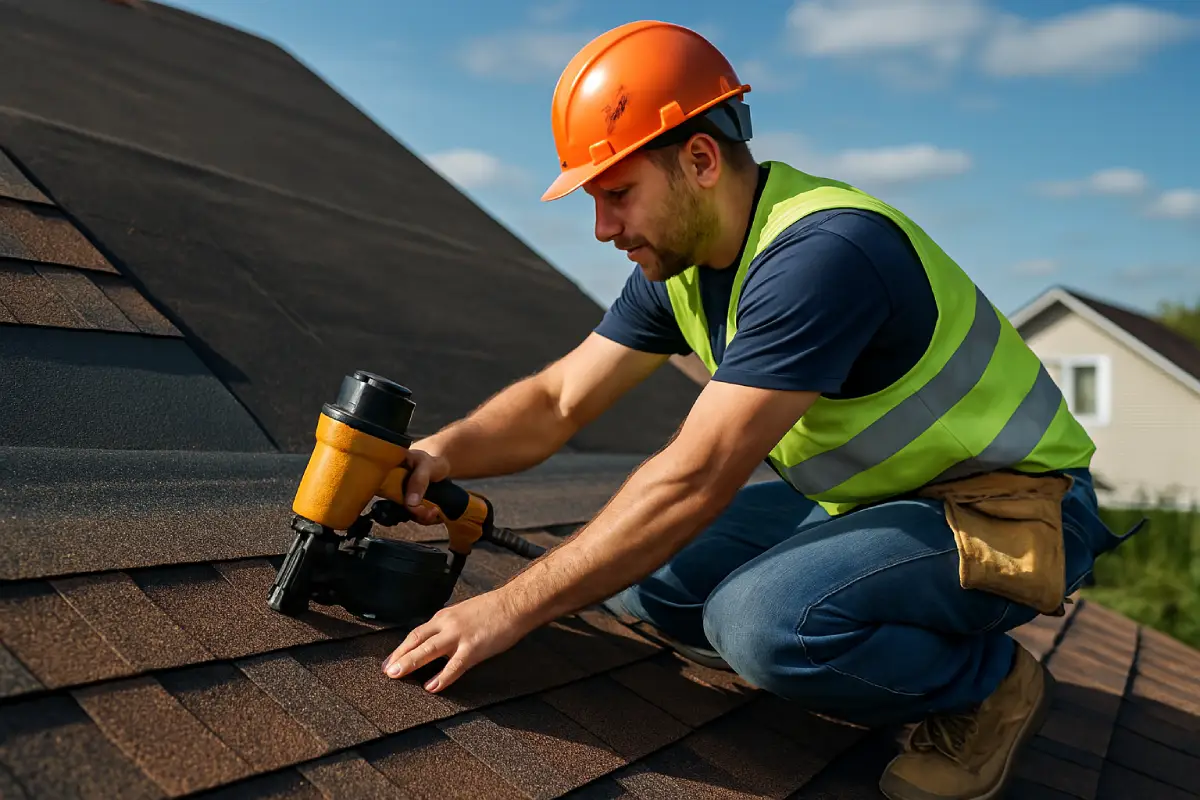A roof serves as more than a protective covering; it plays a major role in energy efficiency, structural integrity, and long-term value. Issues like worn shingles, water intrusion, or storm damage can compromise its performance.
Homeowners often find themselves caught between deciding whether to patch things up or commit to a full replacement. While both options can resolve problems, they come with different implications for cost, longevity, and overall property condition.
Understanding when to choose one approach over the other helps prevent wasted money and frustration. Each situation depends on the roof’s current state, material type, and broader home improvement goals.
The Scope of Partial Repairs
Partial roof fixes target a specific section with visible or reported damage. Contractors may replace cracked shingles, reseal flashing, or patch a minor leak. This option often appeals to homeowners looking to extend the roof’s life without undertaking a full tear-off.
Localized repair works best when the roof is relatively new or the damage remains isolated. In many cases, it can hold up for several years and may even come with short-term warranties. The challenge lies in ensuring the materials match. Discoloration between old and new shingles can create visible patches, which may reduce curb appeal.
Choosing this route requires a professional assessment to avoid missing underlying problems. A repair might mask issues like mold, compromised underlayment, or structural weaknesses, leading to recurring expenses.
When Full Replacement Makes More Sense
There comes a point where replacing the entire roof becomes more logical than stringing together multiple fixes. If more than 25 to 30 percent of the roof shows wear or damage, a full replacement often provides better value in the long run. Old roofs nearing the end of their manufacturer-rated lifespan should receive special consideration.
Full replacement eliminates risks related to hidden leaks or uneven aging across the surface. It creates a uniform appearance, reduces the chance of future water damage, and boosts property value. Homes in regions with frequent storms or temperature swings benefit from newer, more resilient materials.
The cost of replacement runs higher up front, but it often lowers insurance premiums and improves energy performance. This makes it a worthy investment for homeowners committed to maintaining their property.
Evaluating Cost Differences and Long-Term Value
Price plays a big role in determining whether to fix or replace a roof. Repairs typically cost less initially, with expenses ranging from a few hundred to a couple of thousand dollars, depending on the scope. Full replacements, in contrast, can range between $8,000 to $15,000 or more, depending on the size and type of materials used.
That said, repairs may need to be repeated if the roof continues to age unevenly. Some homeowners spend more money cumulatively over five to ten years patching up sections than they would have with one replacement. Warranty terms differ too, and repairs might come with limited protection, while full installations often include labor and material coverage for 20 years or longer.
A qualified roofer can help weigh the short-term cost against long-term savings and performance, offering clarity during the decision-making process.
Weather Patterns and Geographic Impact
Location heavily influences roofing strategy. In climates with harsh winters, intense heat, or frequent storms, roofs endure more stress year after year. Partial repairs in these conditions can serve as short-term solutions but may not hold up through extreme events.
Full replacements offer peace of mind by introducing stronger sealing systems, storm-resistant shingles, and improved venting. In regions like Florida or the Gulf Coast, homeowners often opt for complete roofing updates to meet evolving building codes and withstand hurricane-force winds.
Choosing a roofer with local expertise helps ensure materials and designs match environmental conditions. A provider familiar with residential and commercial roofing in Sun City Center can offer advice tailored to that climate. Experienced roofers can walk clients through timing and product choices, reducing guesswork.
Material Compatibility and Aesthetic Consistency
Not all roofing materials age the same way. Asphalt shingles, for instance, may fade differently depending on sun exposure, while metal panels retain color more consistently. When homeowners choose partial repairs, blending new sections with the old can create aesthetic mismatches that stand out.
This visual inconsistency doesn’t affect function but can impact resale value. Buyers may interpret the visible patchwork as a sign of deferred maintenance. In contrast, full replacements offer uniformity in tone, texture, and material age, supporting both function and appearance.
Matching materials during repair requires access to old stock or custom coloring, which can raise costs and complexity. In some cases, finding an exact match becomes impossible if the product line has been discontinued.
Making the right choice between a roof repair and a full replacement depends on factors like age, damage extent, and long-term goals. While repairs might work for newer roofs with isolated issues, older or heavily worn systems often benefit from full replacement. Consulting a knowledgeable contractor can help clarify the best course of action for your home’s condition and local climate. Informed decisions today can prevent costly surprises tomorrow and help preserve property value.
